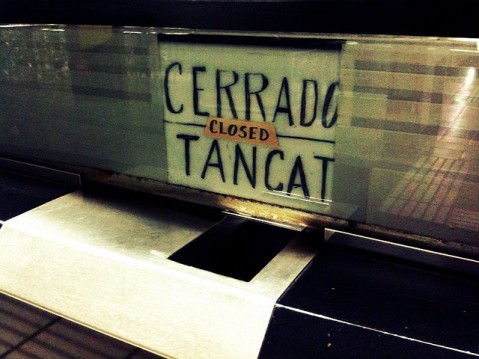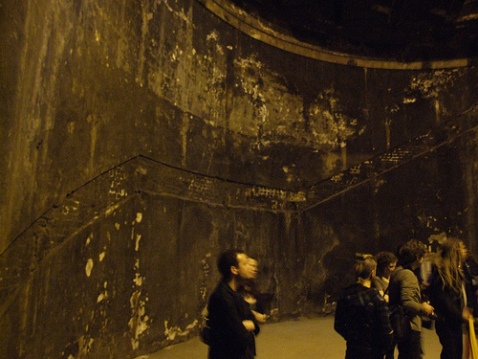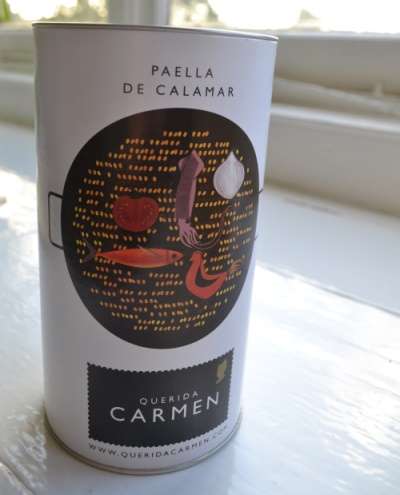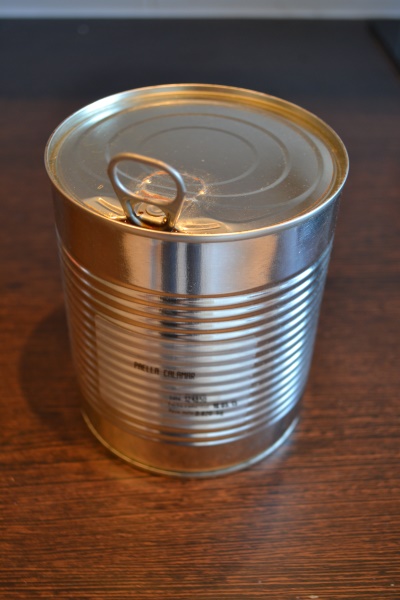Cerrado

This post is slightly belated… but I wanted to put a quick note on here to say that Vida London is closed for the foreseeable future.
The blog is still getting some traffic and email enquiries, so the posts will remain for the time being. I am working on other projects, and no longer live in London (though I am there regularly). You can still follow me on Twitter.
Thanks to everyone who has taken the time to read and comment on my posts!
El Bulli for you: Ferran Adrià and the Art of Food at Somerset House
“Academics have been relatively slow to study the subject of cooking. It is often taken for granted.”
So says Gwyn Miles, director of Somerset House, which is trying to give cooking a proper re-examination via a major retrospective of what was, until recently, the world’s best restaurant – Ferran Adrià’s El Bulli, in Roses, Catalonia.
Ferran Adrià and the Art of Food is a thorough – some might say, geekily thorough – examination of the philosophy, science and culinary genius behind El Bulli, which closed its doors on 30 July 2011.
In the exhibition’s detailed history of the El Bulli restaurant, it’s fascinating to learn it was set up by a homeopathic doctor from Dusseldorf, who originally ran it as a mini-golf course and beach bar in the early 60s. From such humble beginnings, it evolved into a noted haute cuisine venue, before – under the guidance of Adrià from the mid-80s onwards – transforming into an avant-garde food mecca. In the process, it won the title of best restaurant in the world five times.
El Bulli clearly had – and still has – a strong sense of its own importance. What else are we to make of a restaurant that, in 1999, retroactively catalogued all its original recipes from 1987 onwards – starting at recipe number 1, and ending on number 1,846 in 2011?
Among the mixed bag of displays is a short video of the final service at the restaurant, which has since graduated to a sort of ghostly kitchen afterlife as the ‘El Bulli Foundation’ – “set to be one of the stellar knowledge spaces in a new paradigm of cooking”, according to the programme. The Foundation will be part cooking academy, part food thinktank, with an exhibition centre due to open in 2014. Sounds like a nice way for Ferran Adrià to continue cooking without having pesky customers underfoot. Its slogan is: “no reservations, no routines, no timetables”. (But will they do patatas bravas?)
Somerset House deserves a pat on the back for creating “galleries to display the unusual, the unexpected, and the sometimes neglected”. Plenty of people would say great food can be great art (my only caveats would be: unlike music, literature or fine arts, food is so transitory, and unrepeatable. You have to be a particular type of person to remember in detail a fantastic meal you had in 1991. Plus, unlike those other ‘art forms’, food alone is 100% essential to the functioning of your body).
Either way , there’s no doubting in the form Ferran Adrià, you have a bona fide maestro. Though if his work is art, presumably the best way to appreciate it would be to eat it. It depends on the individual how much they will get from an exhibition about a restaurant that – in all likelihood – they have never visited, and now never will.
Ferran Adrià and the Art of Food runs at Somerset House until 29 September. Admission is £10.
Related articles
East End Film Festival returns with Argentine focus
The East End Film Festival is back with an eclectic selection of films from around the world – and a special focus on Argentina.
The EEFF began yesterday, 25 June, and continues until 10 July, with more than 70 film screenings around the east end, at venues including the Rio Cinema, Genesis, the Barbican, Stratford Picturehouse, and Rich Mix.
This year’s special focus is on Argentine cinema, with six films and a session of short films on display:
“Following Armando Bo’s dark comic drama The Last Elvis [above] taking the EEFF’s top award in 2012, Bo returns to the festival as the EEFF’s Director in Residence as the festival presents a phenomenal selection of films from new Argentine directors, including the extraordinary, mystical debut from Pablo Trapero’s screenwriting partner Alejandro Fidel, The Wild Ones; Jazmin Lopez’s Leones, Mariano Llinás’s mind-bending meta-thriiler Extraordinary Stories; a selection of Argentina’s most vital short films; and a special rescreening of El Ultimo Elvis.”
The festival will also be holding a series of talks and film-making workshops. For more information, see the East End Film Festival website.
Related articles
Flamenco in the Thames Tunnel at Brunel Museum

The Thames Tunnel is hosting live concerts. Image: failing_angel/Flickr
Like flamenco? Like underground spaces? Want to hear flamenco music in the world’s oldest tunnel under a river?
Well, now you can: the flamenco trio Attab Haddad, Ramón Ruíz & Demi García Sabat are performing in the Thames Tunnel underground shaft as part of a series of events staged by the Brunel Museum.
The Brunel Museum in Rotherhithe is directly above the Thames Tunnel, designed and built by Sir Marc Brunel and his son Isambard Kingdom Brunel, who joined his dad on the project when it ran into a series of problems (it was, at the time, one of the most ambitious engineering projects in the world).
The tunnel was built between 1825 and 1843 and it served pedestrians upon opening. People reached the tunnel via staircases in two circular shafts at either end of the tunnel, in Rotherhithe and Wapping – and one of these shafts is now playing host to the Brunel Museum’s concerts.
(The tunnel was not a big hit with the Victorians, by the way. After some initial excitement, people lost interest because accessing it was so difficult – and possibly also because it linked one fairly out of-the-way place with another. Plans to have horse-drawn carriages go through it proved impractical and in 1869 it began running steam trains. It’s still in use as part of the London Overground.)
2013 is the 17oth anniversary of the tunnel and the museum is holding a whole series of events.
The Attab Haddad trio specialise in oud, guitar and percussion, and the performance is on Wednesday 26 June at 7.30pm. Tickets are £10.
Related articles
Pinta London art show opens at Earls Court
Pinta London, the annual showcase of Latin American, Spanish and Portuguese contemporary art, returns to Earls Court this week.
Running 4-7 June, this year’s show is the fourth edition of Pinta London (itself a spin-off of Pinta New York).
The exhibition brings together works from dozens of small galleries as well hosting stalls and talks. Sponsors include Gaucho restaurants and Branding Latin America, and Ventana Latina magazine is among the media types who will have a stall on the floor.
Pinta’s museum acquisitions programme is designed to help major galleries – including Tate Modern, the Pompidou Centre, and El Museo del Barrio in New York – add to their collections of Latin American art. Under the programme, Pinta puts up funds to buy artwork – funds which are then matched (or overmatched) by the museums themselves.
“Pinta London has become a key moment in the European art calendar, in prime position between the opening of the 55th Venice Biennale and Art Basel,” says Pinta chairman Alejandro Zaia.
“We are excited about the high standard of the Latin American talent which this year’s galleries will be presenting, and proud to give profile to these artists at a time when there is increased interest in buying Latin American art. We have no doubt that visitors to this year’s show will be impressed by what they will see.”
Here is a PDF of the floor plan at Pinta London 2013. Tickets are £15.
Related articles
Paella in a can via Grey’s Fine Foods
Grey’s Fine Foods is a new importer of Spanish food to the UK, hoping to take on well-established players like Brindisa.
It’s run by Yorkshire-based, Spanish-born Javier De La Hormaza, and it already stocks 200 products from 18 regions in Spain. The catalogue lists everything from milk-fed lamb and jamon iberico to anchovies, turron, caviar and olive oil. Grey’s (the name comes from ‘graze’) also prides itself on its selection of Spanish wines and brandies.
“Spain’s export markets have always been focused on South America and, recently, Germany, with the UK left to one side. But no more! We want to build those bridges and offer a range of fine foods and wines that have been almost impossible to source in Britain in the past,” Javier says.
Grey’s kindly sent me a box of products to try, including this delicious, melt-in your mouth jamon iberico and award-winning Fuenroble olive oil.
But I was most intrigued by their paella-in-a-can offering from Querida Carmen, for people in a hurry.
“A gourmet paella ready in 20 minutes with no chopping or messing the kitchen,” Grey’s promises.
Inside the can, which promises all-natural ingredients, low in salt, it’s a little soupy. I followed the instructions and brought the concoction to the boil, before adding the rice.
You leave the stew on a soft boil for 20 minutes, then take it off the heat and let it stand for 5 minutes.
I’ll be honest, I gave it a little longer, as the broth wasn’t fully absorbed. I then spooned it out into my paella pan.
 The result was a little liquidy – more like a risotto than a paella (and not doing it in a pan means you don’t get the black crispy bits). It was undeniably tasty, with good chunks of sausage and squid, and we made short work of it.
The result was a little liquidy – more like a risotto than a paella (and not doing it in a pan means you don’t get the black crispy bits). It was undeniably tasty, with good chunks of sausage and squid, and we made short work of it.
However, it didn’t quite get the taste of paella right for me. Also, at £12.50, it’s not cheap. On the other hand, it was incredibly simple to make.
The paella was a fun experiment – and the jamon was murderously good. I’ll bear Grey’s in mind next time I need to source some Spanish goods – though I wonder if they’ll go the Brindisa route, and open a shop. And a restaurant…
Find out more on Grey’s Fine Foods website.
































